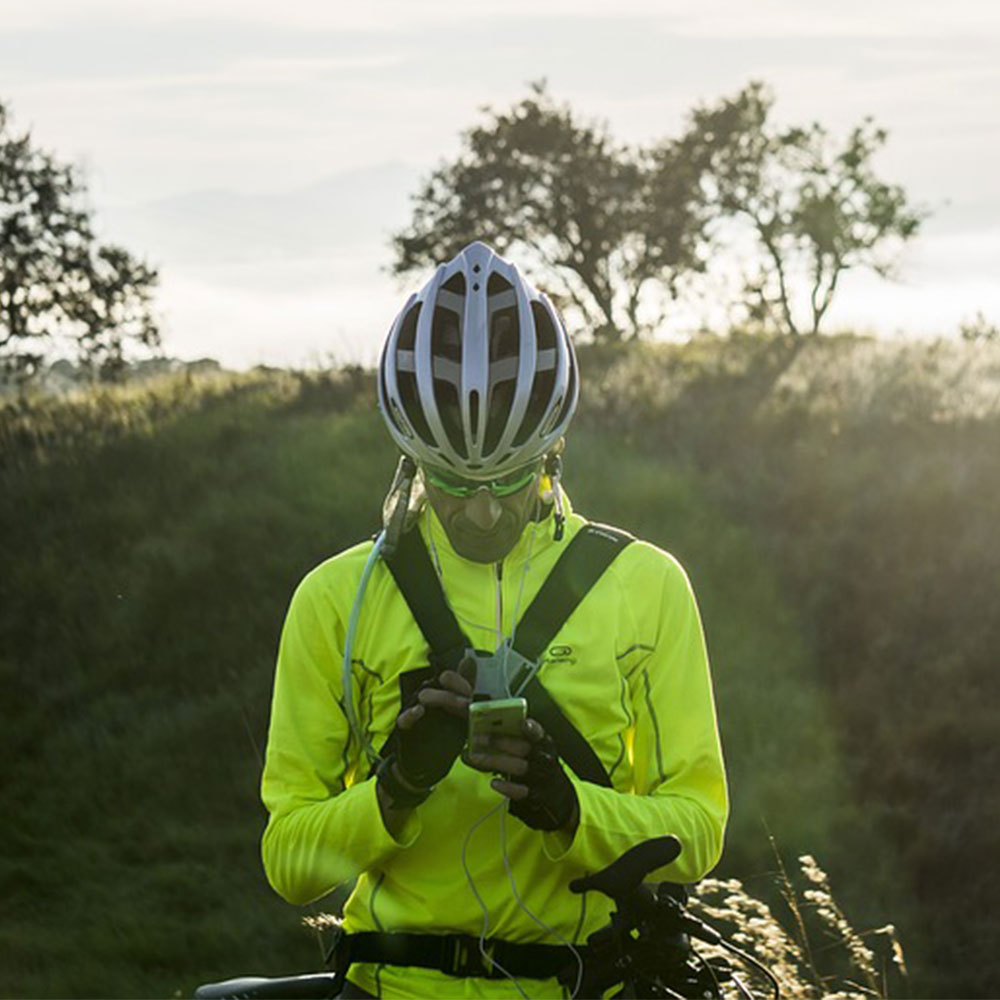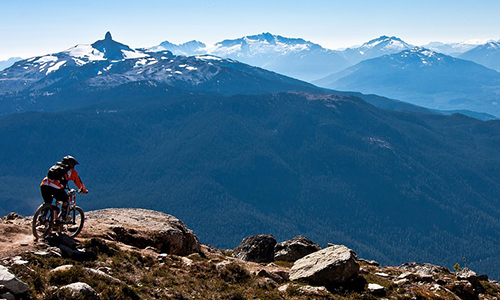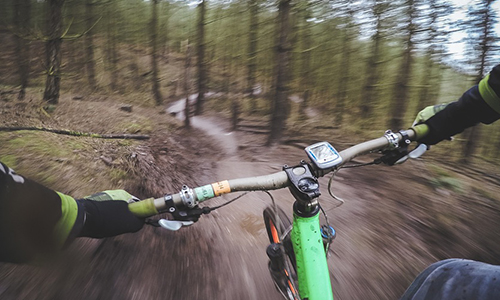Some handy tips to take into consideration before your next ride
Author

Chris shares his passion for cycling, hiking, skiing, and climbing from Buxton, in the Peak District. As a blogger for Outdoor Look, Chris shares outdoor tips and indoor tricks to help you get the most out of your time spent outside. When he's not out adventuring he's making videos or trying to keep up with his 4-year-old son.
 It’s time to take your bike and head out on an adventure for bikepacking is a great way to explore the lands. If you’re a novice, you need to learn the basics, like what bike to ride and how to pack your gear. Once you learn these, consider these tips and tricks to make your bikepacking adventures that little bit more fun.
It’s time to take your bike and head out on an adventure for bikepacking is a great way to explore the lands. If you’re a novice, you need to learn the basics, like what bike to ride and how to pack your gear. Once you learn these, consider these tips and tricks to make your bikepacking adventures that little bit more fun.
Adjust the tires
Adjust your tires and suspension according to the terrain. Also, check the amount of weight you’re carrying. The more weight you are carrying, the more you need to increase the air in your tires along with the suspension pressure.
Carrying adequate amount of water is a must
Take as many bottle cages as you can. You can get hose clamps from the hardware store to attach cages almost anywhere. You can also secure bottles directly to the frame using ski straps instead of attaching cages.
Keep it light
It is advisable to only pack the essentials. You’d be caught gasping for breath as you carry tons and tons of luggage.
Bikepacking Bags
Contrary to the popular belief, it is not necessary to have fancy bikepacking bags. A majority cylindrical-shaped objects can be strapped to your handlebars. You just need to make sure they don’t interfere with steering or any of your components. Carry minimum luggage to avoid straining your back.
Be systematic
 t’s good to organise everything. Pack your belonging in the same place. You’ll save a considerable amount of time if you don’t have to dig through three different bags every time you need something. Think about the items you use regularly and keep them accessible.
t’s good to organise everything. Pack your belonging in the same place. You’ll save a considerable amount of time if you don’t have to dig through three different bags every time you need something. Think about the items you use regularly and keep them accessible.
Warm Hands, Warm Heart
Good gloves and warm socks are indispensable when you’re out in the cold. Bring extra layers if you’re expecting rain. Soggy hands and feet make you feel uneasy.
Fix it up: This has a couple of parts
Part 1: Bikepacking often takes you to remote places with no quick way out. Zip ties, cord and duct tape can help you fix many issues that pop up while you’re riding. Also, check your tool kit and make sure you have everything you need when you return.
Part 2: It’d be beneficial for you if you keep a track of the bike shops on your route. These shops can act as your trip’s saving grace if you aren’t carrying spare parts.
Music is good
Download some music and podcasts before you leave so you can listen while you ride. however don’t wear headphones when you’re riding on streets with cars surrounding you.
Keep your gadgets charged
Make sure the electronics such as smartphones and GPS trackers are charged. Take plenty of backup batteries for your GPS. A solar panel can come in handy as well.
Snacks can come in handy
Pack some of your favourite snacks, you'll need them after a tough climb. Repackage them in plastic baggies to save space.
Finding water
While planning a route, consider your water sources. At the end of a long day, the last thing you want to do is ride additional miles searching for water. Having a cold stream nearby is ideal for cleaning yourself up and soaking tired feet.
Wash Up
Riders often forget to clean helmet pads, even though they absorb sweat all day. Keep a plastic bag with you, and keep adding into it whatever needs washing. Add some water and some biodegradable soap. Prepare a clothesline using a cord and hang it up in your tent.
Author

Chris shares his passion for cycling, hiking, skiing, and climbing from Buxton, in the Peak District. As a blogger for Outdoor Look, Chris shares outdoor tips and indoor tricks to help you get the most out of your time spent outside. When he's not out adventuring he's making videos or trying to keep up with his 4-year-old son.
- Speed Up Your Post-Hike Recovery with These 6 Essential Tips
- Cycling through Tranquil Roads and Coastal Views on the Isle of Wight
- The Essential Guide to Hiking Safety: 5 Tips Every Hiker Should Know
- Run Smart, Run Strong: Your Guide to Injury-Free Running
- Embrace Biking: Essential Tips for Beginners
Categories
- Sport (28)
- Product Reviews (3)
- Team Outdoor Look (7)
- Mike Wild (2)
- Mike Payton (2)
- Suse Hammond-Pears (3)
- Snowboarding (12)
- Latest Offers (105)
- Shop Talk (1)
- Competitions (7)
- Walking (413)
- Lifestyle Fashion (8)
- Travel (86)
- Kit Guides (176)
- Workwear Clothing (6)
- Safety Workwear (4)
- Health/Fitness (289)
- Skiing (91)
- Great Outdoors (1316)
- Cycling (92)
- January 2025
- December 2024
- November 2024
- October 2024
- September 2024
- August 2024
- July 2024
- June 2024
- May 2024
- April 2024
- March 2024
- February 2024
- January 2024
- December 2023
- November 2023
- October 2023
- September 2023
- August 2023
- July 2023
- June 2023
- May 2023
- April 2023
- March 2023
- February 2023
- January 2023
- December 2022
- November 2022
- October 2022
- September 2022
- August 2022
- July 2022
- June 2022
- May 2022
- April 2022
- March 2022
- February 2022
- January 2022
- December 2021
- November 2021
- October 2021
- September 2021
- August 2021
- July 2021
- June 2021
- May 2021
- April 2021
- March 2021
- February 2021
- January 2021
- December 2020
- November 2020
- October 2020
- September 2020
- August 2020
- July 2020
- June 2020
- May 2020
- April 2020
- March 2020
- February 2020
- January 2020
- December 2019
- November 2019
- October 2019
- September 2019
- August 2019
- July 2019
- June 2019
- May 2019
- April 2019
- March 2019
- February 2019
- January 2019
- December 2018
- November 2018
- October 2018
- September 2018
- August 2018
- July 2018
- June 2018
- May 2018
- April 2018
- March 2018
- February 2018
- January 2018
- December 2017
- November 2017
- October 2017
- September 2017
- August 2017
- July 2017
- June 2017
- May 2017
- April 2017
- March 2017
- February 2017
- January 2017
- December 2016
- November 2016
- October 2016
- September 2016
- August 2016
- July 2016
- June 2016
- May 2016
- April 2016
- March 2016
- February 2016
- January 2016
- December 2015
- November 2015
- October 2015
- September 2015
- August 2015
- July 2015
- June 2015
- May 2015
- April 2015
- March 2015
- February 2015
- January 2015
- December 2014
- November 2014
- October 2014
- September 2014
- August 2014
- July 2014
- June 2014
- May 2014
- April 2014
- March 2014
- February 2014
- January 2014
- December 2013
- November 2013
- October 2013
- September 2013
- August 2013
- July 2013
- June 2013
- May 2013
- April 2013
- March 2013
- February 2013
- January 2013
- December 2012
- November 2012
- October 2012
- September 2012
- August 2012
- July 2012
- June 2012
- May 2012
- April 2012
- March 2012
- February 2012
- January 2012
- December 2011
- November 2011
- October 2011
- September 2011
- August 2011
- May 2010
- April 2010
- March 2010
- February 2010
- January 2010
- November 2009
- October 2009
- September 2009
Submit a Comment